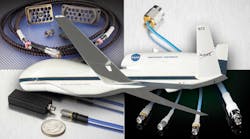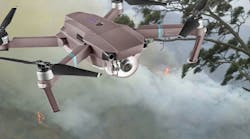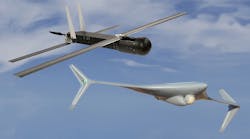High-Altitude System Offers Long-Term Earth Monitoring
Swift Engineering earned a NASA Phase II award for a capability demonstration of the company’s Swift Ultra Long Endurance (SULE) high-altitude platform systems (HAPS). Swift Engineering has pioneered (HAPS) technology that can cost-effectively monitor the surface of the Earth from high altitudes and for long continuous periods of time (see image above). The firm also produces a variety of unmanned aviation systems of interest to branches of the military for use in unmanned aerial vehicles (UAVs) or drones.
Hamed Khalkhali, President of Swift Engineering (San Clemente, Calif.), acknowledged the importance of NASA’s award, “The resources and support of the NASA SBIR program are vital to driving technology innovations that are critical in addressing multiple challenges and opportunities.”
He noted that the NASA-sponsored SBIR platform encourages higher performance at lower costs, “We are proud to have been involved in this program on multiple occasions in pursuit of delivering high-performance, cost-effective solutions.”
NASA seeks reliable, long-term observational capability from the stratosphere for emergency management and to study environmental conditions (such as temperature rises). It has also evaluated the possible use of HAPS platforms such as balloons and drones.
Swift is exploring the design and development of SULE unmanned aerial systems (UASs) capable of 30-day endurance for both defense and industrial applications and has already reached an altitude of 55.904 feet mean sea level (MSL) during a 24-hour test flight. The firm earned SBIR awards for a wide range of technologies, including a wireless water monitoring system, an IoT-enabled buoy-based water sensor system, and an expendable, inexpensive, long-endurance drone for military applications.
Learn more about drones/UASs
About the Author
Jack Browne
Technical Contributor
Jack Browne, Technical Contributor, has worked in technical publishing for over 30 years. He managed the content and production of three technical journals while at the American Institute of Physics, including Medical Physics and the Journal of Vacuum Science & Technology. He has been a Publisher and Editor for Penton Media, started the firm’s Wireless Symposium & Exhibition trade show in 1993, and currently serves as Technical Contributor for that company's Microwaves & RF magazine. Browne, who holds a BS in Mathematics from City College of New York and BA degrees in English and Philosophy from Fordham University, is a member of the IEEE.




